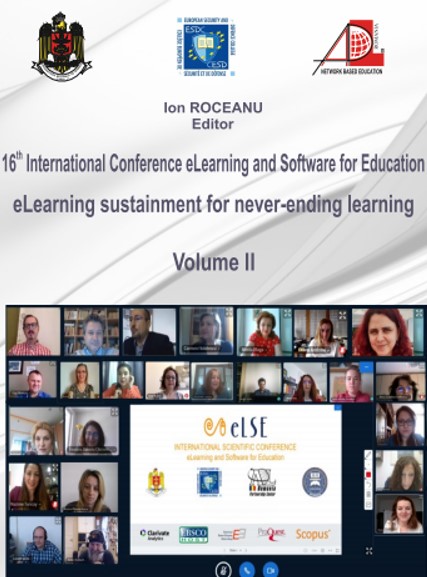A FREQUENCY-DOMAIN MODEL FOR E-LEARNING
A FREQUENCY-DOMAIN MODEL FOR E-LEARNING
Author(s): Brandusa RaileanuSubject(s): Foreign languages learning, Higher Education , ICT Information and Communications Technologies, Distance learning / e-learning, Pedagogy
Published by: Carol I National Defence University Publishing House
Keywords: e-learning strategies; Systems Theory; mathematical model; frequency-domain representation; interdisciplinary approach; foreign languages learning; Laplace transformation;
Summary/Abstract: The characteristics of e-learning make it suitable to the Systems Theory approach. A system is an ensemble of entities which interact among themselves and with the exterior, in order to reach an objective. Clearly, e-learning integrates with this definition. The first trend in applying Systems Theory to e-learning was in lines of von Bertalanffy’s General Systems Theory. But being too general and descriptive, this approach did not develop concrete methods of being used to organizing and studying the e-learning process. The aim of this paper is to construct and apply a mathematical model for the e-learning process within the Systems and Control Theory, using both the state-space representation of systems and the frequency domain framework. This interdisciplinary approach between learning pedagogy, mathematics, statistics and engineering gives the possibility of following the evolution of the e-learning process, of evaluating, estimating, controlling, regulating and improving the results of the users of its tools. The paper introduces two linear time-invariant (LTI) systems, respectively continuous-time and discrete-time models. Their inputs correspond to different e-learning methods and the outputs are the various forms of examination and testing. Using Laplace transformation and z-transformation, one obtains the frequency-domain representation by transfer matrices of both models. Suitable programs are created, which are based on the Control Systems Toolbox of the Matlab software. This approach provides very simple methods of estimating the concrete results of different e-learning strategies and of choosing optimal policies. In the paper, this e-learning model is applied to the study of foreign languages, in which the state variables correspond to the four main skills, reading, writing, listening and speaking. Similar applications can be developed for various engineering courses. An example is provided, based upon a sampling and statistical study of the behaviour of a group of students from the Faculty of Applied Sciences, University Politehnica of Bucharest.
Journal: Conference proceedings of »eLearning and Software for Education« (eLSE)
- Issue Year: 16/2020
- Issue No: 02
- Page Range: 462-469
- Page Count: 8
- Language: English

